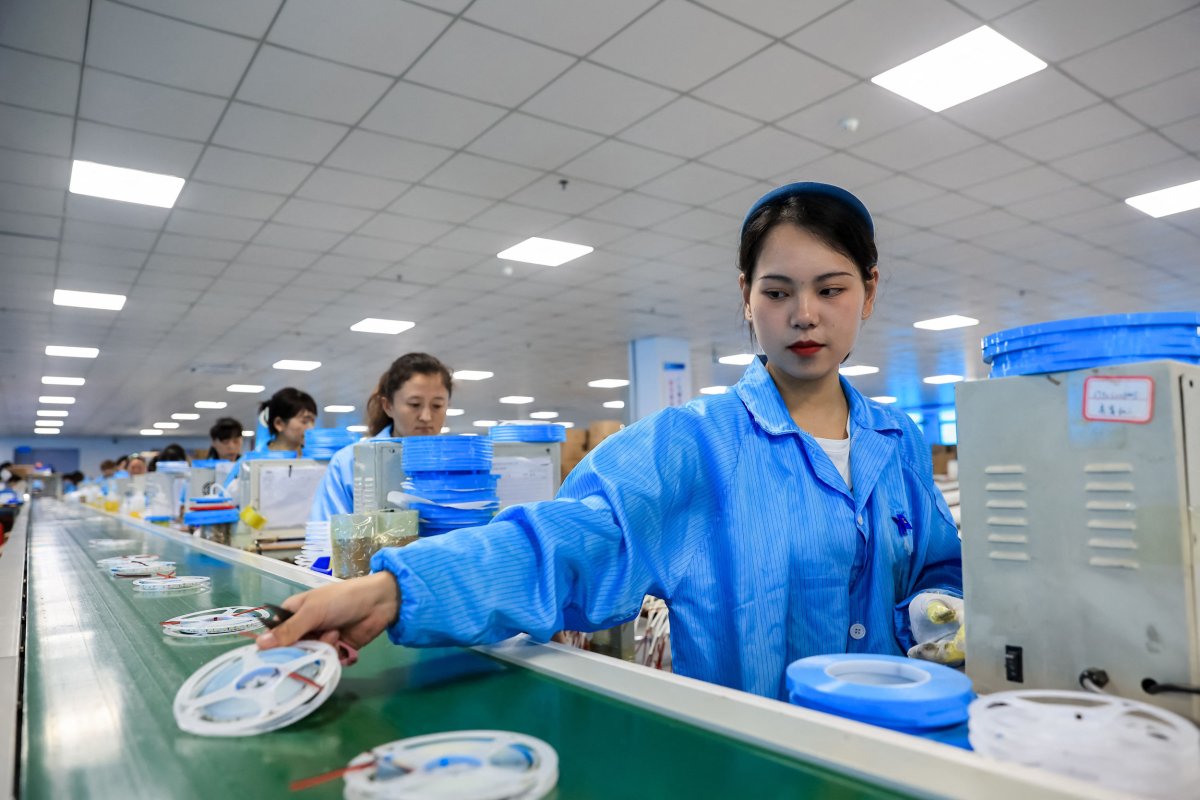A critical pillar of China's economy continued its decline for the fourth consecutive month in January.
Though the purchasing managers' index (PMI) released Wednesday included glimmers of hope in some areas, it showed that overall, the manufacturing-driven economy is still struggling to find its footing.
Since Beijing dropped its strict COVID-19 pandemic-era lockdowns at the beginning of last year, the world's second-largest economy has been buffeted by slowing growth, muted global demand for exports, foreign investor flight, a continuing real estate crunch, and a high debt-to-GDP ratio that threatens liquidity.
The PMI functions as a barometer of economic trends in the manufacturing sector. It is calculated from the weighted scores of several sub-indices based on supply chain managers' responses in monthly surveys.

The headline PMI inched upward to 49.2 in January, according to data from the Chinese statistics bureau.
State media pointed out this was an improvement over the PMI readings of 40.5, 49.4, and 49 reported for October, November, and December, respectively. However, January's PMI still fell short of 50, known as the critical point. A PMI of 50 signifies no change, while a higher number suggests industry expansion.
Newsweek reached out to China's National Bureau of Statistics with a written request for comment.
According to the report, large enterprises outperformed SMEs this month with a PMI reading that exceeded 50.4 percent, an 0.4 percent improvement over last month.
Medium-sized enterprises, though, against experienced contraction, rising up 0.2 points but to only 48.9 percent. Small businesses struggled the most, sliding 0.1 to a PMI of 47.2 percent.
In terms of the five sub-indices, only production and suppliers' delivery time rose past the critical point, reaching 51.3 and 50.8 percent, respectively, the bureau said.
Meanwhile, new orders at factories ticked upward, but only to 49. The raw material and employment sub-indices registered PMIs of 47.6 and 47.6, respectively.
The readings indicate that while production was on the rise, demand was lackluster and manufacturing employers were feeling the pinch.
"The rise in the manufacturing index was mostly driven by a rise in the output component," the South China Morning Post reported research company Capital Economics as saying.
The sub-critical point component and export orders were "consistent with softening demand and a decline in exports," it added.
The disappointing news appeared to weigh on China's already-beleaguered stock market.
China's CSI 300 Index, a weighted index of the top 300 stocks listed on the Shanghai and Shenzhen Stock Exchanges, dropped 0.91 percent to close at 3,215.35 Wednesday, the lowest in five years.
Meanwhile, the Hang Seng Index (HSCEI), an overall measure of mainland securities' performance in Hong Kong, fell 1.39 percent to 15,485.07.
Uncommon Knowledge
Newsweek is committed to challenging conventional wisdom and finding connections in the search for common ground.
Newsweek is committed to challenging conventional wisdom and finding connections in the search for common ground.
About the writer
Micah McCartney is a reporter for Newsweek based in Taipei, Taiwan. He covers U.S.-China relations, East Asian and Southeast Asian ... Read more
To read how Newsweek uses AI as a newsroom tool, Click here.






